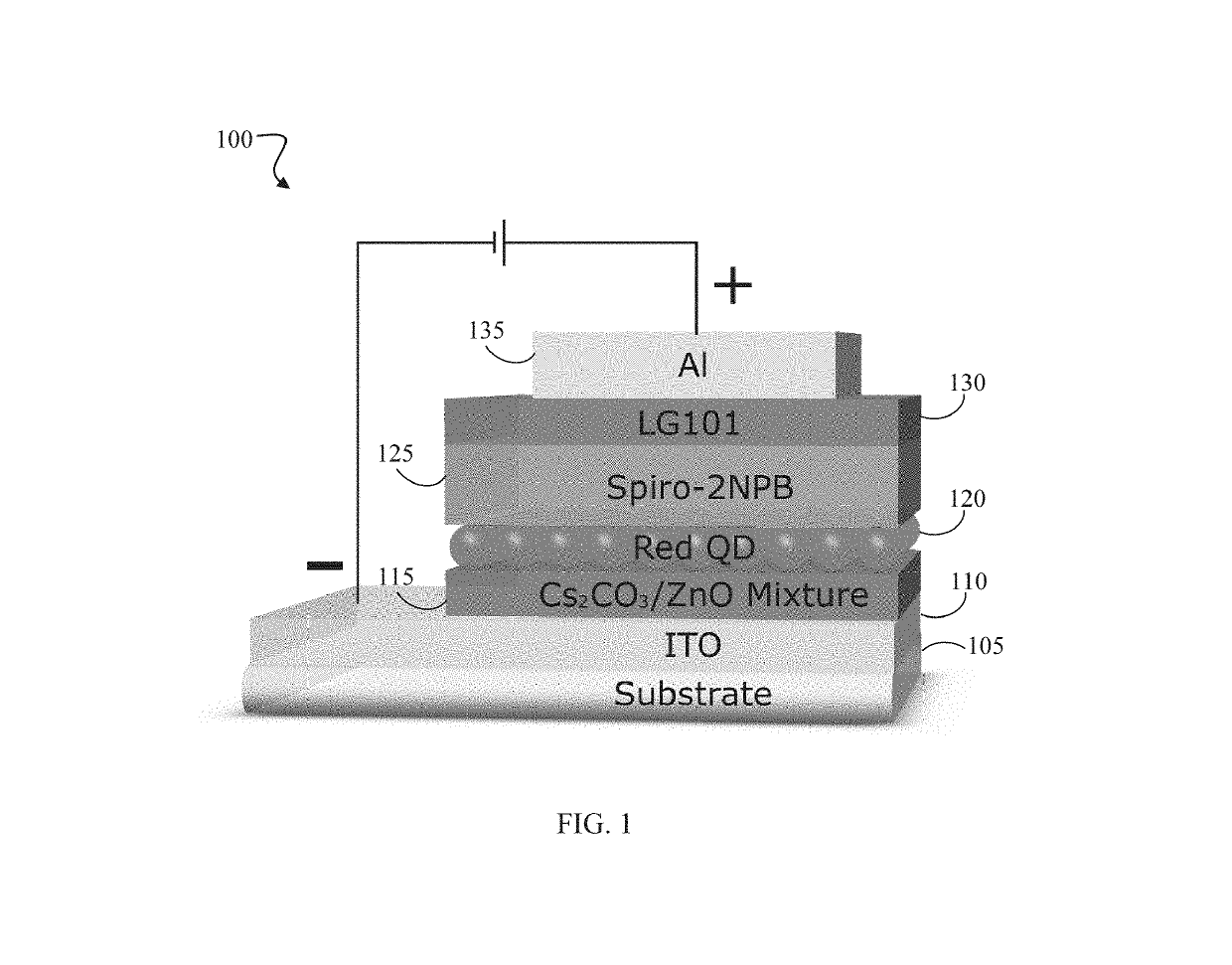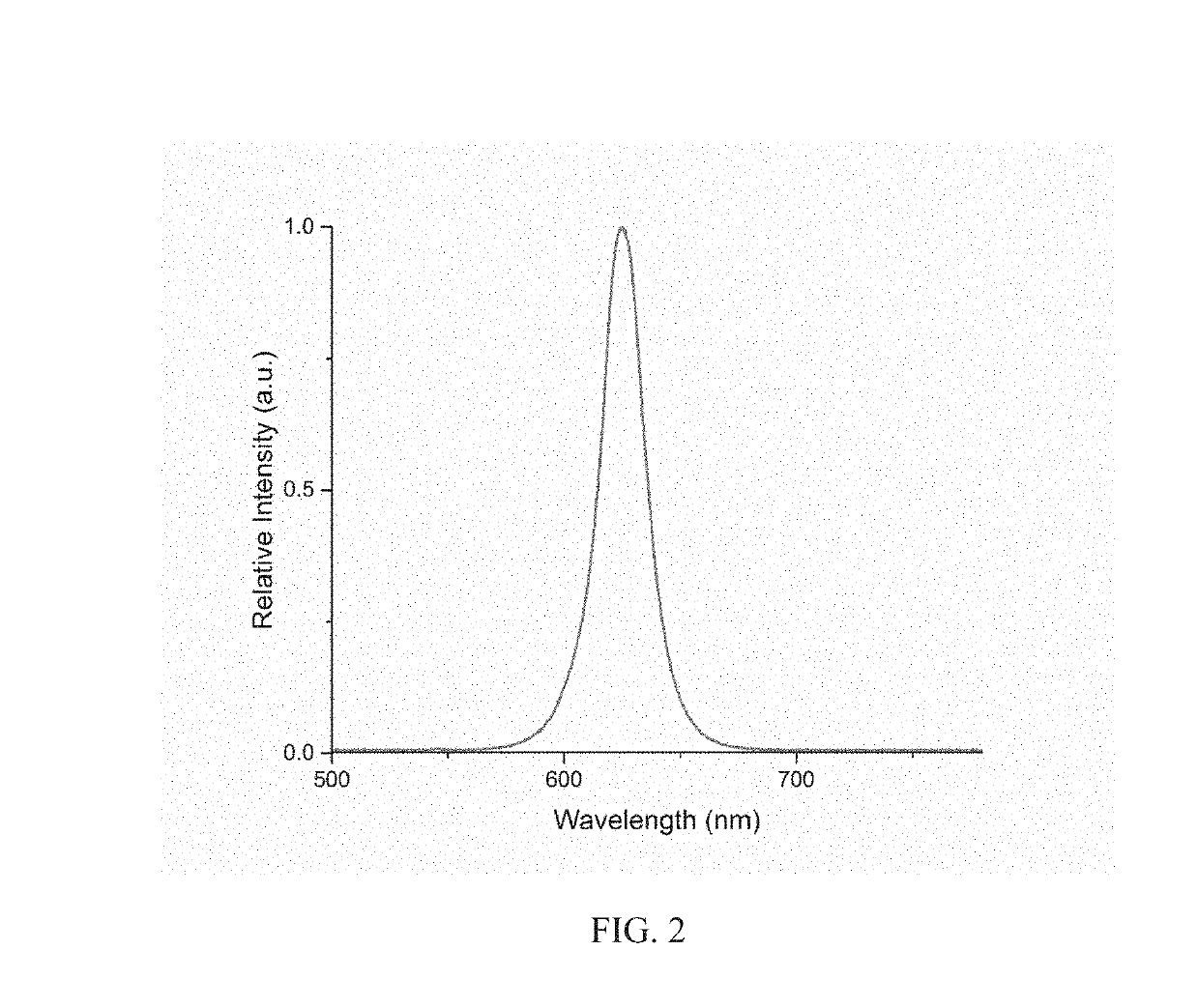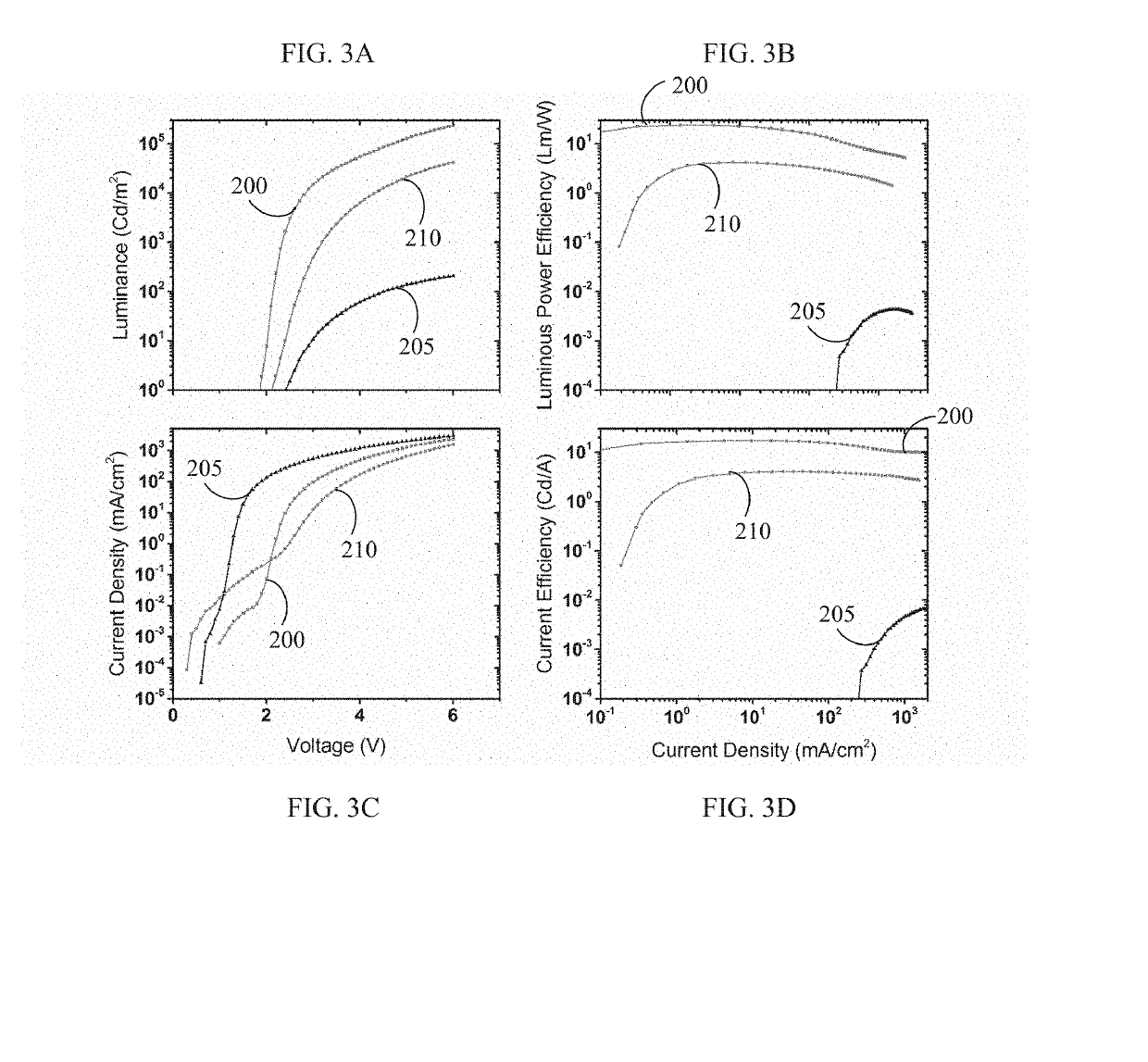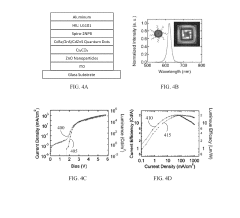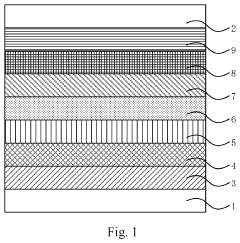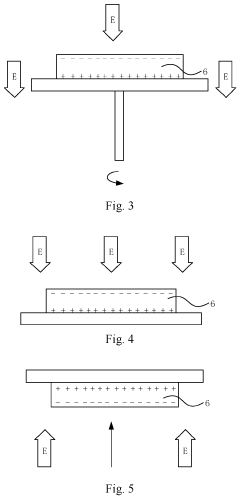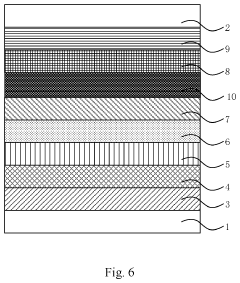QNED in Healthcare Display Applications: A New Frontier
QNED Technology Evolution
QNED (Quantum Nano Emitting Diode) technology has undergone significant evolution since its inception, marking a new era in display technology, particularly for healthcare applications. The journey of QNED began with the fundamental research into quantum dot materials and their unique light-emitting properties.
In the early stages, researchers focused on developing stable quantum dot compositions that could produce precise wavelengths of light. This phase was crucial in establishing the foundation for QNED technology, as it allowed for the creation of highly saturated colors with exceptional purity.
As the technology progressed, attention shifted towards integrating quantum dots into LED structures. This integration posed significant challenges, particularly in maintaining the quantum efficiency of the dots when incorporated into a solid-state device. Scientists and engineers worked tirelessly to overcome these hurdles, developing novel fabrication techniques and materials to preserve the quantum properties of the nanocrystals.
The next major milestone in QNED evolution came with the development of electrically driven quantum dot LEDs. This breakthrough allowed for direct current injection into the quantum dot layer, eliminating the need for a separate backlight and phosphor conversion layer found in traditional LED displays. The result was a significant improvement in energy efficiency and color accuracy.
Recent advancements have focused on enhancing the stability and longevity of QNED devices. Researchers have made substantial progress in developing encapsulation methods to protect quantum dots from environmental factors that could degrade their performance over time. This has been particularly crucial for healthcare applications, where long-term reliability is paramount.
The evolution of QNED technology has also seen improvements in manufacturing processes, enabling the production of larger display panels with higher resolutions. This scaling up has been essential for the adoption of QNED in medical imaging systems, where large, high-resolution displays are often required for accurate diagnosis and surgical planning.
In the context of healthcare displays, QNED technology has evolved to meet specific requirements such as high contrast ratios, wide color gamuts, and low blue light emission. These advancements have made QNED displays particularly suitable for long-duration use in medical settings, reducing eye strain for healthcare professionals who rely on these displays for extended periods.
Looking forward, the evolution of QNED technology is expected to continue, with research focusing on further improving quantum efficiency, reducing power consumption, and expanding the range of colors that can be produced. As the technology matures, we can anticipate its integration into a wider array of healthcare devices, from portable diagnostic tools to advanced surgical displays, further revolutionizing medical imaging and patient care.
Healthcare Display Market
The healthcare display market has witnessed significant growth in recent years, driven by the increasing adoption of advanced medical imaging technologies and the growing demand for high-quality visual information in healthcare settings. This market segment encompasses a wide range of display technologies used in various medical applications, including diagnostic imaging, surgical navigation, patient monitoring, and telemedicine.
The global healthcare display market is expected to continue its upward trajectory, with a compound annual growth rate (CAGR) projected to remain strong over the next five years. This growth is primarily attributed to the rising prevalence of chronic diseases, the aging population, and the increasing investments in healthcare infrastructure worldwide.
One of the key factors driving market expansion is the growing demand for high-resolution displays in medical imaging applications. As diagnostic imaging techniques such as MRI, CT, and ultrasound continue to advance, there is a corresponding need for displays that can accurately render complex medical images with exceptional clarity and detail. This has led to the development of specialized medical-grade monitors with features such as high brightness, wide color gamut, and precise calibration capabilities.
Another significant trend in the healthcare display market is the increasing adoption of large-format displays in operating rooms and interventional suites. These displays enable surgical teams to view multiple sources of information simultaneously, enhancing collaboration and decision-making during complex procedures. The integration of touch-screen capabilities and gesture-based interfaces in these displays is further improving their usability and efficiency in clinical settings.
The telemedicine sector has also emerged as a major driver of growth in the healthcare display market. The COVID-19 pandemic has accelerated the adoption of remote healthcare services, leading to increased demand for high-quality displays that can facilitate accurate remote diagnosis and patient consultations. This trend is expected to continue even after the pandemic, as healthcare providers recognize the benefits of telemedicine in improving access to care and reducing costs.
In terms of technology, there is a growing shift towards OLED and microLED displays in the healthcare sector. These technologies offer advantages such as higher contrast ratios, wider viewing angles, and improved color accuracy compared to traditional LCD displays. However, the adoption of these advanced display technologies in healthcare applications is still in its early stages, primarily due to cost considerations and the need for extensive validation in medical environments.
The healthcare display market is characterized by intense competition among major players, including established medical technology companies and specialized display manufacturers. These companies are investing heavily in research and development to introduce innovative display solutions that meet the evolving needs of healthcare professionals and comply with stringent regulatory requirements.
QNED Technical Challenges
QNED (Quantum Nano Emitting Diode) technology in healthcare display applications faces several significant technical challenges that need to be addressed for its successful implementation and widespread adoption. One of the primary hurdles is achieving consistent and uniform quantum dot emission across large display areas. The precise control of quantum dot size and distribution is crucial for maintaining color accuracy and brightness uniformity, which is particularly critical in medical imaging applications where diagnostic accuracy is paramount.
Another major challenge lies in the long-term stability of quantum dots under various operating conditions. Healthcare environments often require displays to function continuously for extended periods, exposing them to heat, humidity, and potentially harsh cleaning agents. Ensuring that QNED displays maintain their performance characteristics over time without degradation is essential for their reliability in medical settings.
The integration of QNED technology with existing display manufacturing processes presents another significant hurdle. Adapting current production lines to accommodate the unique requirements of quantum dot deposition and patterning while maintaining cost-effectiveness and scalability is a complex task. This challenge is compounded by the need to meet stringent medical device regulations and standards, which often require extensive testing and validation processes.
Color gamut and contrast ratio optimization remain ongoing challenges for QNED displays in healthcare applications. While QNED technology offers potential improvements in these areas, achieving the level of color accuracy and contrast required for precise medical imaging, such as in radiology or surgical visualization, demands further refinement of the technology.
Power efficiency and heat management are also critical concerns, particularly for portable medical devices and displays used in operating rooms. QNED displays must balance high brightness and color performance with low power consumption and minimal heat generation to ensure patient safety and device longevity.
Lastly, the development of suitable driving circuits and control systems tailored to QNED displays poses a significant technical challenge. These systems must be capable of precisely controlling the quantum dot emission while minimizing artifacts and ensuring rapid response times, which are crucial for dynamic medical imaging applications such as real-time ultrasound or fluoroscopy.
Overcoming these technical challenges will require collaborative efforts between materials scientists, display engineers, and medical professionals to develop innovative solutions that meet the specific needs of healthcare display applications. As research progresses, addressing these hurdles will be key to unlocking the full potential of QNED technology in revolutionizing medical imaging and diagnostic capabilities.
Current QNED Solutions
01 Quantum dot enhancement for QNED displays
QNED displays utilize quantum dots to enhance color performance and brightness. These nanoscale semiconductor particles are integrated into the display structure to improve light emission efficiency and color purity. The quantum dots can be precisely tuned to emit specific wavelengths of light, resulting in a wider color gamut and improved overall display quality.- Quantum dot enhancement for QNED displays: QNED displays utilize quantum dots to enhance color performance and brightness. These nanoscale semiconductor particles are integrated into the display structure to improve light emission efficiency and color purity. The quantum dots can be precisely tuned to emit specific wavelengths of light, resulting in a wider color gamut and improved overall display quality.
- Nano-LED structure optimization: The quality of QNED displays is significantly influenced by the structure of nano-LEDs. Researchers focus on optimizing the design and fabrication of these nano-scale light-emitting diodes to improve efficiency, reduce power consumption, and enhance overall display performance. This includes refining the active layer composition, electrode design, and quantum well structures.
- Color conversion and light management: QNED displays employ advanced color conversion techniques and light management strategies to achieve superior image quality. This involves the use of specialized color filters, light-guiding structures, and reflective layers to optimize light extraction and color accuracy. These technologies work in tandem to produce vibrant, high-contrast images with improved energy efficiency.
- Quantum well engineering for enhanced emission: The quality of QNED displays is further improved through quantum well engineering. By carefully designing the quantum well structures within the nano-LEDs, researchers can enhance electron-hole recombination efficiency and optimize light emission characteristics. This leads to brighter displays with better color saturation and reduced power consumption.
- Integration of quantum dots with nano-LED arrays: QNED display quality is enhanced through the seamless integration of quantum dots with nano-LED arrays. This combination allows for precise control over light emission at the pixel level, resulting in improved color accuracy, contrast, and overall image fidelity. Advanced manufacturing techniques are employed to ensure uniform distribution and optimal performance of the quantum dot-nano-LED hybrid structure.
02 Nanostructure design for improved light emission
Advanced nanostructure designs are employed in QNED displays to optimize light emission. These include engineered quantum well structures, nanowires, and nanorod arrays that enhance electron-hole recombination and light extraction efficiency. The careful design of these nanostructures contributes to improved brightness, contrast, and energy efficiency in QNED displays.Expand Specific Solutions03 Integration of micro-LED technology
QNED displays often incorporate micro-LED technology to achieve high pixel density and improved display quality. These microscopic LEDs, combined with quantum dot technology, allow for precise control of individual pixels, resulting in enhanced contrast ratios, faster response times, and better energy efficiency compared to traditional LED-backlit displays.Expand Specific Solutions04 Advanced materials for QNED fabrication
The development of advanced materials plays a crucial role in improving QNED display quality. This includes the use of novel semiconductor compounds, barrier materials, and encapsulation techniques to enhance the stability and performance of quantum dots and nanostructures. These materials contribute to improved color accuracy, longevity, and overall display reliability.Expand Specific Solutions05 Display architecture and driving methods
Innovative display architectures and driving methods are developed to maximize the potential of QNED technology. This includes optimized pixel layouts, advanced backplane designs, and sophisticated driving schemes that enhance image quality, reduce power consumption, and improve overall display performance. These advancements contribute to better motion handling, HDR capabilities, and viewing angles in QNED displays.Expand Specific Solutions
Key QNED Manufacturers
The QNED (Quantum Nano Emitting Diode) technology in healthcare displays is emerging as a promising frontier, currently in its early development stage. The market for advanced medical displays is expanding, driven by the increasing demand for high-quality imaging in diagnostics and surgical procedures. While the technology is still maturing, several key players are actively involved in its development and application. Companies like BOE Technology Group, LG Display, and Koninklijke Philips are at the forefront, leveraging their expertise in display technologies. Medical equipment manufacturers such as Siemens Healthineers and Shenzhen Mindray Bio-Medical Electronics are also exploring QNED integration. Research institutions like Drexel University and The Hong Kong University of Science & Technology are contributing to technological advancements, indicating a collaborative ecosystem that is propelling QNED towards commercial viability in healthcare applications.
BOE Technology Group Co., Ltd.
Shenzhen Mindray Bio-Medical Electronics Co., Ltd.
QNED Core Innovations
- The development of ultrabright QLEDs using a layer of quantum dots combined with a mixture of metal oxide nanoparticles and alkali metal compounds for simultaneous electron injection and hole blocking, achieving charge balance at high driving current densities, resulting in significantly higher brightness and stability.
- Incorporating ionic coordination compound layers with built-in electric fields between the hole transport layer and quantum dot luminescent layer, and between the electron transport layer and quantum dot luminescent layer, to alter vacuum energy levels and reduce potential barriers, thereby improving hole injection efficiency and balancing carriers.
Medical Imaging Standards
Medical imaging standards play a crucial role in ensuring the quality, consistency, and interoperability of healthcare display applications. As QNED (Quantum Nano Emitting Diode) technology emerges as a potential game-changer in this field, it is essential to consider how it aligns with existing standards and whether new standards may be necessary.
The primary medical imaging standards currently in use include DICOM (Digital Imaging and Communications in Medicine), which provides a comprehensive framework for the storage, transmission, and display of medical images. DICOM defines specific requirements for display systems, including luminance, contrast ratio, and color accuracy. These standards are designed to ensure that medical professionals can accurately interpret images across different devices and locations.
Another important standard is the AAPM TG18 (American Association of Physicists in Medicine Task Group 18), which provides guidelines for the assessment of display performance in medical imaging. This standard addresses factors such as luminance response, spatial resolution, and noise characteristics, all of which are critical for accurate diagnosis.
As QNED technology enters the healthcare display market, it will need to demonstrate compliance with these existing standards. The high contrast ratio and wide color gamut offered by QNED displays may exceed current standard requirements, potentially necessitating updates to accommodate these advanced capabilities. For instance, the DICOM Grayscale Standard Display Function (GSDF) may need to be extended to account for the expanded dynamic range of QNED displays.
Furthermore, the unique characteristics of QNED technology, such as its quantum dot-based light emission and nano-scale LED structure, may require the development of new testing methodologies and quality assurance protocols. These could focus on aspects like long-term stability of quantum dot performance, uniformity of nano-LED arrays, and the impact of these factors on image quality over time.
Regulatory bodies such as the FDA (Food and Drug Administration) in the United States and the EMA (European Medicines Agency) in Europe will likely need to evaluate QNED technology and potentially update their guidelines for medical display devices. This process may involve clinical trials to assess the impact of QNED displays on diagnostic accuracy and patient outcomes.
As QNED technology matures, it will be crucial for industry stakeholders, including manufacturers, healthcare providers, and regulatory agencies, to collaborate on developing and refining standards that fully leverage the capabilities of this new display technology while ensuring patient safety and diagnostic reliability.
QNED Energy Efficiency
QNED (Quantum Nano Emitting Diode) technology represents a significant advancement in display technology, particularly in terms of energy efficiency. This aspect is crucial for healthcare applications, where power consumption and heat generation are critical factors.
QNED displays offer superior energy efficiency compared to traditional LCD and OLED technologies. The quantum dots used in QNED displays are highly efficient at converting electrical energy into light, resulting in less energy waste. This efficiency is particularly beneficial in healthcare settings, where displays may need to operate continuously for extended periods.
The energy-saving properties of QNED technology stem from its unique structure. Unlike LCDs, which require constant backlighting, QNED displays use self-emissive pixels. This means that each pixel can be individually controlled, allowing for precise illumination only where needed. As a result, QNED displays consume significantly less power when displaying darker images or when only a portion of the screen is in use.
In healthcare applications, this energy efficiency translates to several tangible benefits. Firstly, it reduces the overall power consumption of medical devices and imaging systems, leading to lower operational costs for healthcare facilities. This is particularly important in resource-constrained environments or in portable medical devices where battery life is a critical factor.
Moreover, the reduced energy consumption of QNED displays results in less heat generation. This is a crucial advantage in healthcare settings, where maintaining stable temperatures is essential for both patient comfort and the proper functioning of sensitive medical equipment. Lower heat output also contributes to the longevity of the display and surrounding components, potentially reducing maintenance costs and downtime.
The energy efficiency of QNED technology also aligns well with the growing emphasis on sustainability in healthcare. As hospitals and medical facilities strive to reduce their carbon footprint, the adoption of energy-efficient display technologies like QNED can contribute significantly to these efforts.
Looking ahead, the energy efficiency of QNED displays is expected to improve further as the technology matures. Ongoing research is focused on enhancing the quantum efficiency of the nano-emitters and optimizing the display's power management systems. These advancements could lead to even greater energy savings in future healthcare applications, potentially revolutionizing the design and functionality of medical imaging and monitoring devices.
